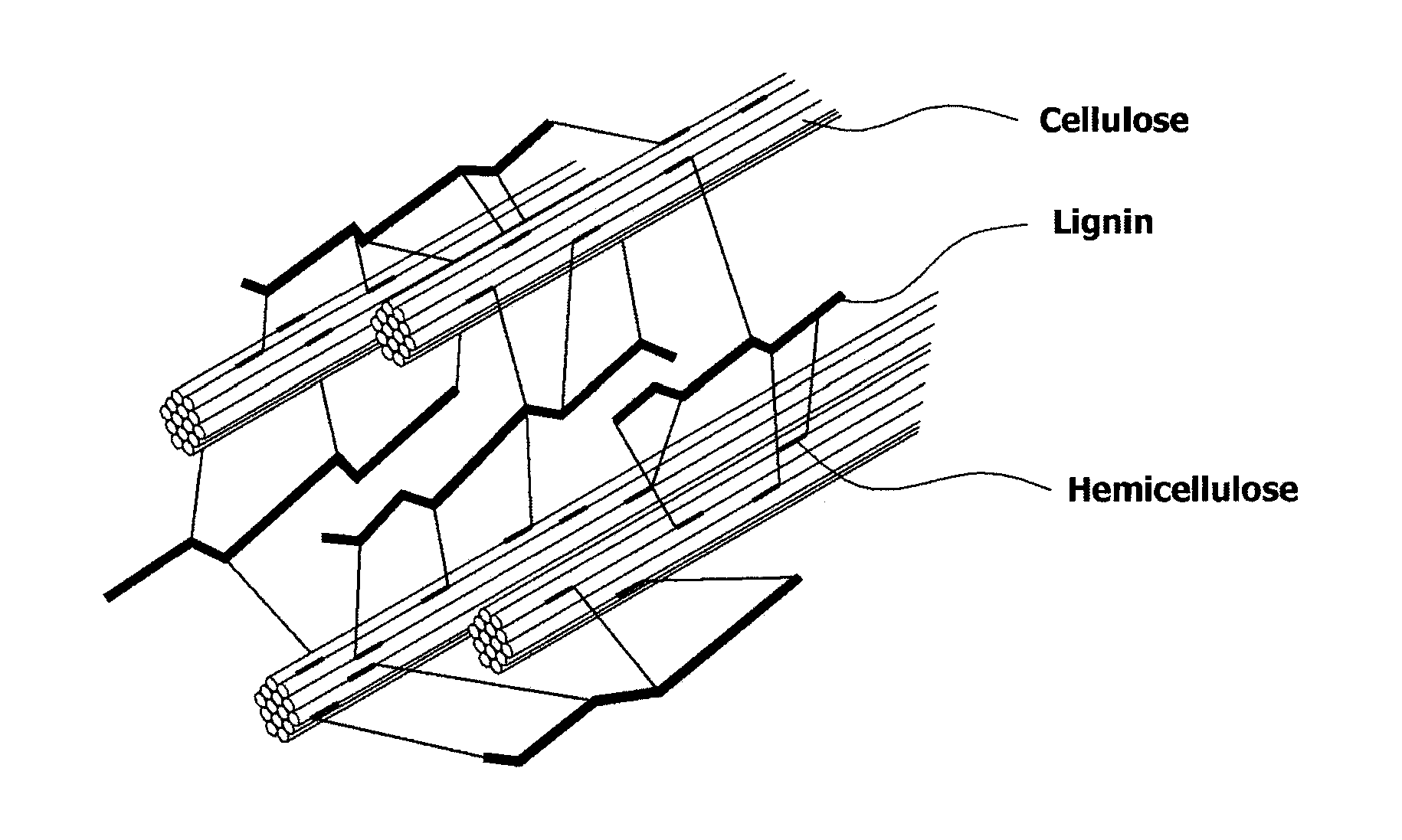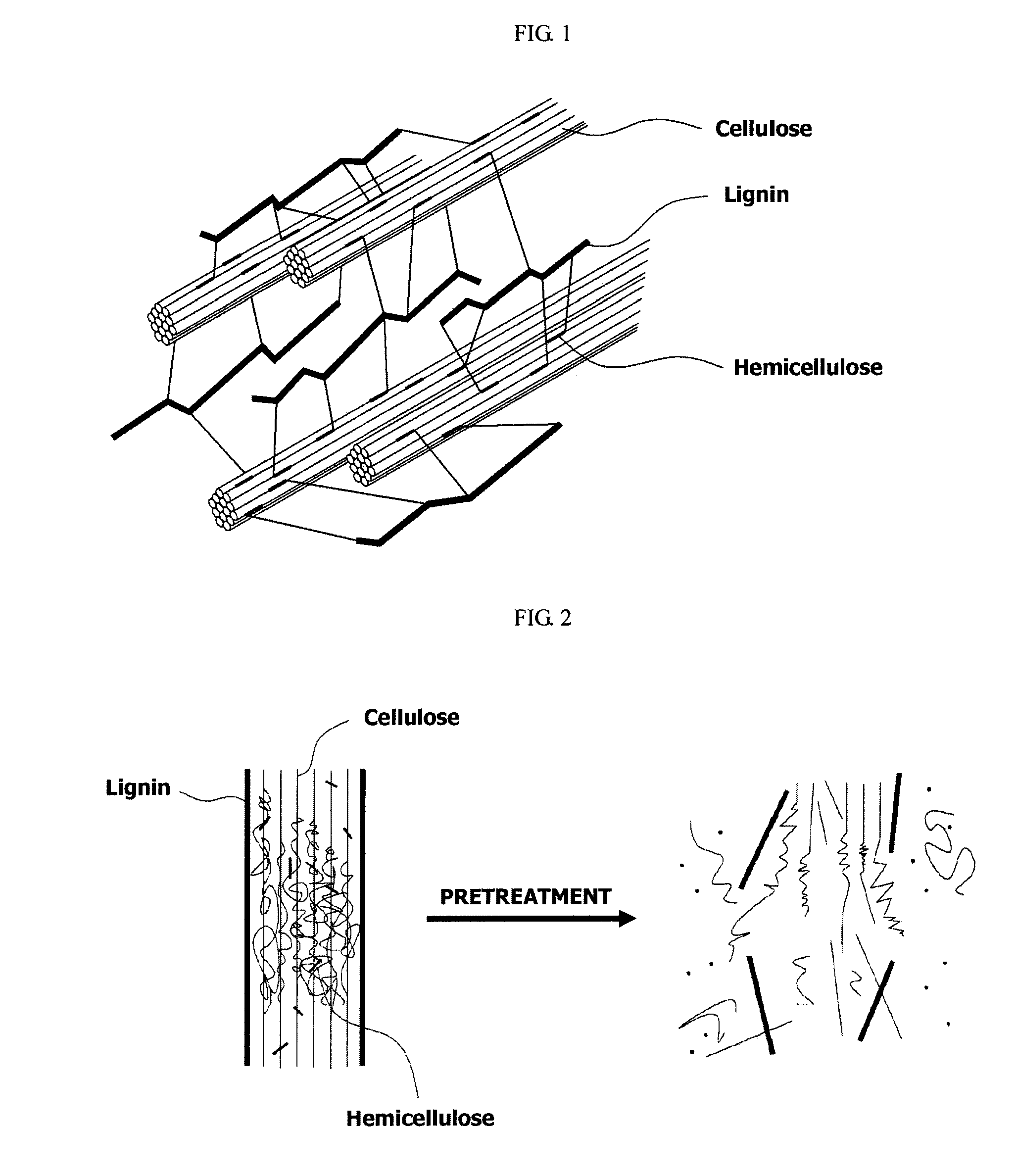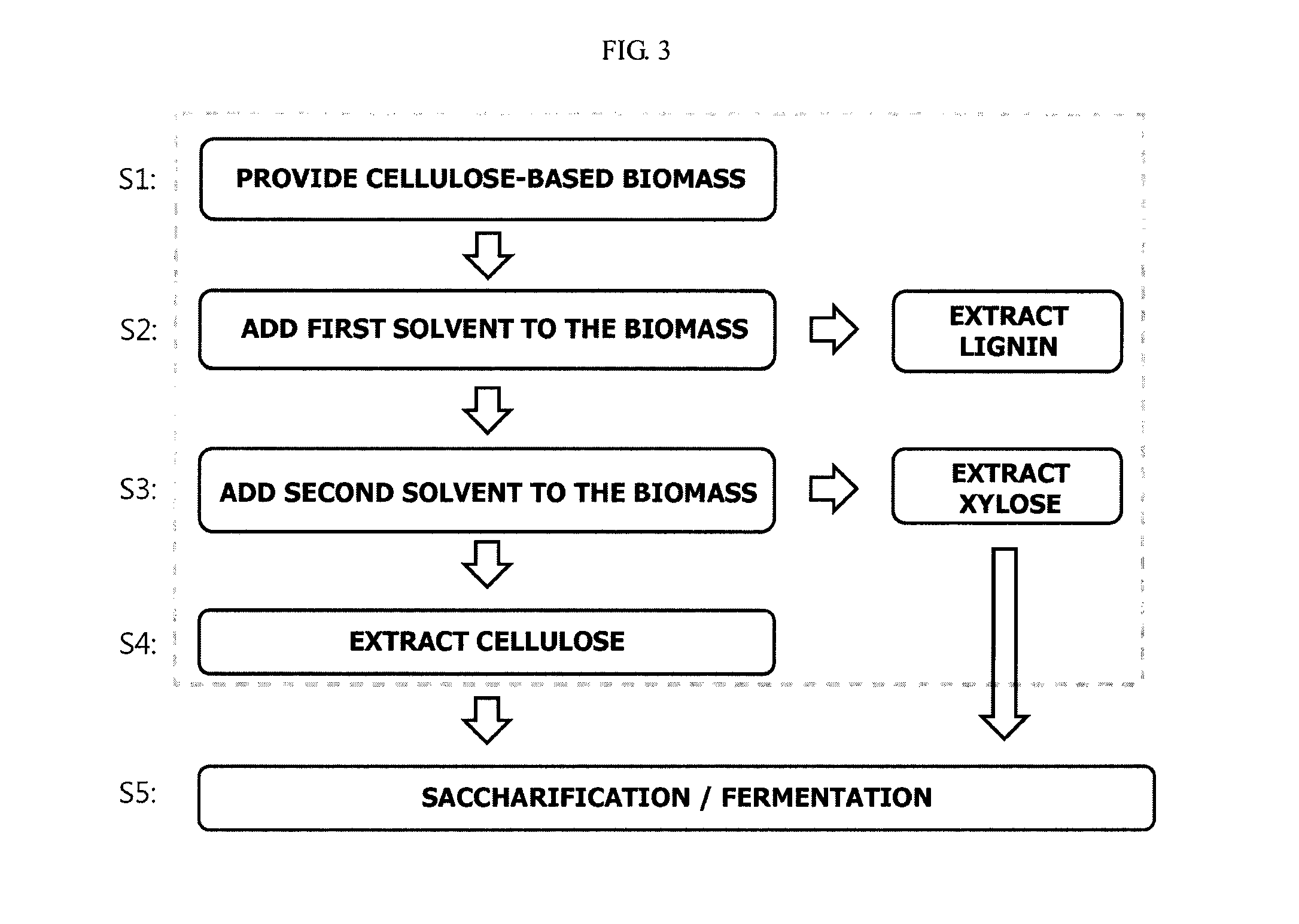Method and apparatus for fractionating lignocellulose-based biomass
a technology of lignocellulose and biomass, which is applied in the direction of chemical/physical processes, pretreatment with alkaline reacting compounds, liquid gas reaction processes, etc., can solve the problems of consuming a considerable amount of energy, the process is not frequently used, and the structure change of lignocellulose, etc., to achieve the effect of improving process efficiency
- Summary
- Abstract
- Description
- Claims
- Application Information
AI Technical Summary
Benefits of technology
Problems solved by technology
Method used
Image
Examples
example 1
[0149]Utilizing the fractionation apparatus shown in FIG. 4, the reaction vessel 100 is filled with a biomass and maintained at a reaction temperature of about 130° C. under a pressure of about 200 psig.
[0150]Next, 10% aqueous ammonia is supplied from the first solvent tank 201 to the reaction vessel 100 so that the biomass is percolated for about 5 minutes. Lignin extracted from the biomass is then transferred to the first storage tank 301. About 58 wt % lignin is obtained based on the content of lignin originally present in the biomass.
[0151]Next, 3 wt % aqueous H2SO4 is supplied from the second solvent tank 202 to the reaction vessel 100. After then the extracted xylose is transferred to the second storage tank 302. The yield of the xylose is about 80 wt % based on the content of xylose originally present in the biomass.
[0152]Finally, a solid component remaining in the reaction vessel 100 is extracted. The yield of cellulose in the solid component is about 85 wt % based on the co...
example 2
[0153]A biomass is fractionated in the same manner as in Example 1 except that 10% NaOH is supplied from the first solvent tank 201 to the reaction vessel 100 at a reaction temperature of about 80° C. under a pressure of about 150 psig. The lignin yield is about 65%, the yield of xylose is about 83%, and the yield of cellulose is about 85% as determined above.
examples 3 to 10
[0162]Utilizing the fractionation apparatus shown in FIG. 4, the reaction vessel 100 is filled with a biomass and maintained under a pressure of about 250 to about 300 psig using nitrogen gas. Under the same process conditions shown in Table 2, 15% aqueous ammonia, as the first solvent, and sulfuric acid, as the second solvent, are sequentially treated. The contents of pentose and furfural, which are contained in the obtained liquid, and pH of the solid biomass finally obtained are measured.
PUM
| Property | Measurement | Unit |
|---|---|---|
| Temperature | aaaaa | aaaaa |
| Fraction | aaaaa | aaaaa |
| Fraction | aaaaa | aaaaa |
Abstract
Description
Claims
Application Information
 Login to View More
Login to View More - R&D
- Intellectual Property
- Life Sciences
- Materials
- Tech Scout
- Unparalleled Data Quality
- Higher Quality Content
- 60% Fewer Hallucinations
Browse by: Latest US Patents, China's latest patents, Technical Efficacy Thesaurus, Application Domain, Technology Topic, Popular Technical Reports.
© 2025 PatSnap. All rights reserved.Legal|Privacy policy|Modern Slavery Act Transparency Statement|Sitemap|About US| Contact US: help@patsnap.com



